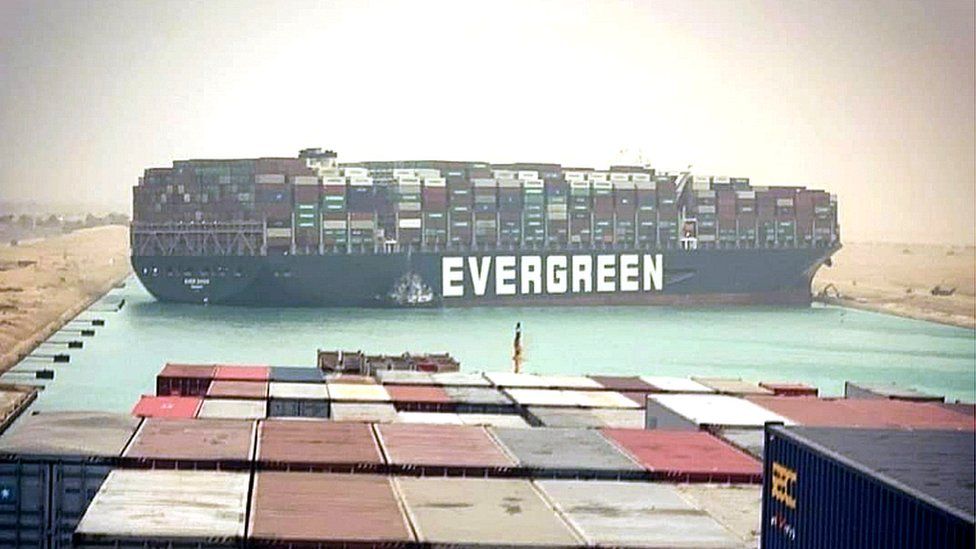Stuck in the Mud
On the morning of March 23, a container ship called Ever Given ran aground in the Suez Canal, blocking passage to the 50 or more vessels that transit the canal each day between the Red Sea and the Mediterranean. This disruption to global supply chains is likely to prove extremely costly. The grounding is one more example of how the shipping industry’s insane quest for size and scale has made global value chains more fragile and less reliable.
Ever Given was launched in March 2018. The ship, a quarter-mile long and nearly 200 feet across, is reportedly able to carry the equivalent of 20,388 20-foot containers — enough cargo to fill more than 10,000 over-the-road trucks. It was en route from China to Northern Europe, one of the few ocean routes on which such enormous vessels are practical. The number of containers on board at the time of the grounding has not been disclosed, but in recent months load factors on the Asia-Europe route have been high.

What went wrong? At this point, much is speculation. But the vessel’s massive size was likely a factor, for at least two different reasons.
The first is that ultra-large container ships need deep water: when the ship is fully loaded, the deepest part of Ever Given‘s keel lies 15.7 meters — nearby 52 feet — beneath the water line. If a ship of that size wanders out of the proper channel, it can quickly wander into trouble.
The second factor that may have contributed to the grounding is the ship’s heavy load. The only way to fit 10,000 40-foot containers aboard a single ship is by stacking boxes high on its deck. Ever Given, photographs suggest, had containers stacked 10-high from stem to stern, in addition to the many boxes in its hold. Steaming north through the canal, it would have presented a solid 80-foot-high wall longer than four football fields to winds blowing from the west. If, as reported, a wind storm struck the canal that day, it is easy to imagine how the vessel could have been blown off course. Something similar happened to Ever Given before. In February 2019, less than a year after its launch, high winds pushed it up against a ferry in the Elbe River in Hamburg, with unfortunate consequences for the ferry.
The price tag on the physical damage is likely to be far less than the cost of the economic disruption the grounding has caused. Hundreds of ships have been delayed, each potentially facing tens of thousands of dollars per day in crew wages and lease or mortgage payments while it rests at anchor. The bill facing cargo owners will be even higher, as they face the carrying costs on the tens of billions of dollars’ worth of cargo marooned aboard vessels now moored at either end of the Suez Canal.
It’s not clear whether they will be able to recover these losses, or who might pay for them. Like many merchant ships, Ever Given has a complicated chain of control, with its Japanese owner having chartered it out to a Taiwanese ship line which engaged a German company to operate it. Future litigation promises to be interesting.
The Ever Given incident is one more demonstration of the vulnerabilities of extended value chains, a subject I discuss in Outside the Box. An accident can happen to any ship, and the potential cost needs to be factored into decisions about where to make things and how to transport them.
Tags: value chains